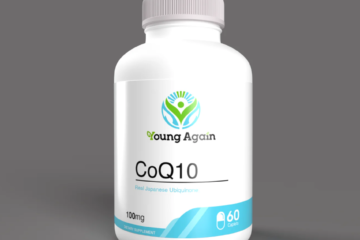Are Dry Eyes A Disease

There’s something about the winter that just makes people miserable. Everything is wet and cold, and we can’t do anything about it. That’s why so many people turn to dry eyes as a way to cope. But is dry eyes really a disease? And if it is, what can you do about it? In this blog post, we will explore the topic of dry eyes and whether or not it’s actually a disease. We will also discuss the various symptoms and how you can treat them. Finally, we will provide some tips on how to prevent dry eyes in the first place.
What are the symptoms of dry eyes?
There is no one-size-fits-all answer to this question, as the symptoms of dry eyes will vary depending on the individual. However, some common signs and symptoms of dry eyes include: eye discomfort, decreased vision, redness and itchiness, excessive tearing, and loss of sensation in the eyes. If you experience any of these symptoms, it is important to consult with a doctor to determine if they are indicative of a more serious condition.
There are a few symptoms of dry eyes that can be easily confused with other conditions. Some people experience a decrease in tear production, which can make it difficult to keep their eyes moist and comfortable. Additionally, dry eyes may cause irritation, redness, and a burning sensation.
Read more: Sanpaku Eyes Curse
What causes dry eyes?
Dry eyes are a common condition that can impact both the eye and the surrounding tissues. Many factors can contribute to dry eyes, including environmental elements, age, lifestyle choices, and genetics. Although there is no one-size-fits-all answer to this question, certain factors may play a role in causing or aggravating dry eyes.
One significant cause of dry eyes is dehydration. Dehydration can result from a variety of factors, including inadequate fluid intake, inadequate hydration during exercise or activity, excessive sweating, and problems with the body’s electrolyte balance. In addition to contributing to dehydration, certain medications (such as diuretics) and environmental irritants (such as smoke) can also lead to dry eyes.
Other causes of dry eyes include allergies, infection (including bacterial and fungal infections), uveitis (an inflammation of the uvea — the sac around the iris), Jorgen’s syndrome (a disorder that causes fatigue and joint pain), and lupus erythematous (an autoimmune disease that affects the skin and other organs). Some people are more likely to experience dry eyes due to certain medical conditions or injuries.
Although there is no one-size-fits-all answer to this question, various factors may play a role in causing or aggravating dry eyes. If you’re experiencing these symptoms frequently or if your Dry Eye Diagnostic Test results indicate that you have dry eye syndrome, it’s
How can you treat dry eyes?
There is no one-size-fits-all answer to treating dry eyes, as the best approach depends on the individual’s symptoms and medical history. But some basic tips include using a humidifier at home, using artificial tears or ointments regularly, and avoiding contact with water that is too hot or cold. If these measures don’t work, a doctor may prescribe an eye medication or an injection of hydrocortisone.
Dry eyes can be caused by a number of things, including environmental factors, medication use, and eye strain. There are a few ways to treat dry eyes:
– Use artificial tears. Artificial tears can help lubricate the eyes and restore moisture levels. You can buy them over the counter or get them prescribed by your doctor.
– Use a humidifier. A humidifier can help increase humidity levels in the room and thereby help relieve dryness.
– Take over-the-counter eye drops that contain lubricants. These drops can help relieve discomfort and reduce the need for artificial tears.
Read more: Sanpaku Eyes Curse
What are the long-term effects of dry eyes?
Dry eyes are a common symptom of many conditions and can be caused by a variety of factors. While the long-term effects of dry eyes are not well understood, they may include decreased vision, discomfort, and functional impairment. There is currently no cure for dry eyes, though various treatments may help improve symptoms.
There’s no one-size-fits-all answer to this question, as the effects of dry eyes vary depending on a person’s individual genetics and health history. But generally speaking, prolonged dry eye syndrome (PDES) can lead to a number of long-term consequences, including:
1. Reduced vision. Dry eye syndrome can cause vision problems in both children and adults, including reduced clarity of vision, decreased distance perception, and difficulty reading. In extreme cases, people may even lose their sight completely.
2. Increased sensitivity to light and other irritants. Dry eye syndrome can also make it difficult for people to tolerate sunlight or other irritating substances, such as fragrances or detergents. This can lead to increased allergies and asthma symptoms, as well as difficulties working or going about daily life due to headaches and fatigue.
3. Premature aging. The skin around your eyes is constantly renewing itself; when dry eye syndrome affects the tears that help keep the skin healthy, this process gets slowed down. This leads to an increased risk of wrinkles and age spots around the eyes, as well as shorter eyelashes and less elasticity in the skin around your eyes.
Conclusion
Dry eyes are a common complaint, and it can be difficult to determine whether they are simply a sign of aging or if there is something more serious going on. If you are experiencing dry eyes that don’t seem to respond to drug treatments or if the problem is causing significant discomfort, you should see a doctor for an evaluation. While dry eyes may not be life-threatening, they can significantly affect your quality of life and require treatment that goes beyond simple moisturizing solutions.










